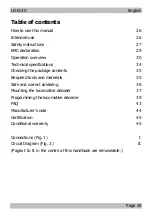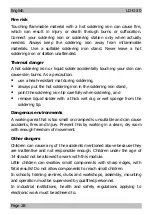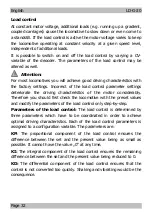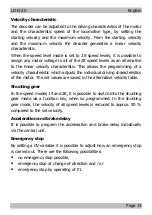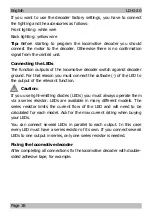
English
LD-G-20
Page 32
!
Load control
At constant motor voltage, additional loads (e.g. running up a gradient,
coupled carriages) cause the locomotive to slow down or even come to
a standstill. If the load control is active the motor voltage varies to keep
the locomotive operating at constant velocity at a given speed level,
independent of additional loads.
It is possible to switch on and off the load control by varying a CV-
variable of the deocder. The parameters of the load control may be
altered as well.
Attention:
For most locomotives you will achieve good driving characteristics with
the factory settings. Incorrect of the load control parameter settings
deteriorate the driving characteristics of the motor considerably.
Therefore you should first check the locomotive with the preset values
and modify the parameters of the load control only step-by-step.
Parameters of the load control:
The load control is determined by
three parameters which have to be coordinated in order to achieve
optimal driving characteristics. Each of the load control parameters is
assigned to a configuration variable. The parameters are:
KP:
The proportional component of the load control ensures the
difference between the set and the present value being as small as
possible. It cannot have the value „0“ at any time.
KI:
The integral component of the load control ensures the remaining
difference between the set and the present value being reduced to 0.
KD:
The differential component of the load control ensures that the
control is not converted too quickly. Shaking and vibrating would be the
consequence.



